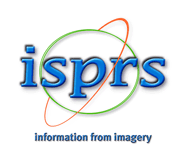Multi-object tracking for motion pattern analysis in biomedical research
Keywords: computer vision, local edge density, multi-threshold analysis, trajectory extraction, Kalman filtering
Abstract. Motion structure analysis is a ubiquitous tool for the evaluation of the dynamical properties of various objects. Automation of image analysis allows not only speeding up the research, but also eliminating the subjective bias characteristic inevitable under manual data processing conditions. The complexity of this task increases dramatically when not one, but several objects of interest are simultaneously tracked using the same videos. In turn, this requires specialized algorithms that uniquely associate selected objects with tracks. Here we present an original algorithm for multiple objects tracking based on computer vision algorithms developed for the image segmentation, as well as subsequent adaptive object selection and tracking. This approach is particularly tailored to the complex motion patterns typically exhibited by natural movements of the living objects of interest in biomedical and ecological research from microscales (e.g., microbes or cells) to macroscales (e.g. animals in laboratory or natural living conditions). The data processing pipeline implementing the proposed algorithms, as well as their validation using simulated data are available at https://github.com/Digiratory/StatTools/blob/main/research/kalman_filter.ipynb.





